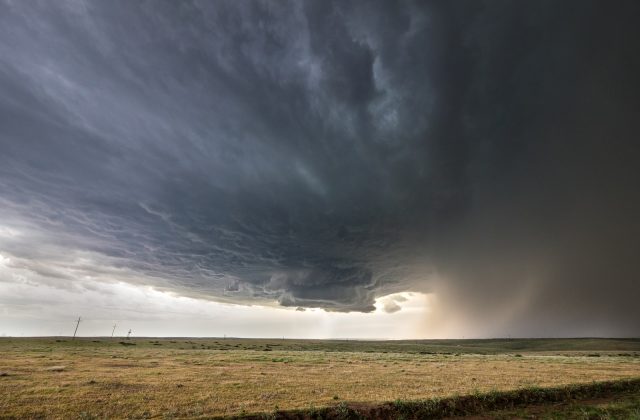Chasing Storms
Storm chasing is a thrilling and exhilarating hobby that has grown in popularity over the years. While chasing storms can be an incredible experience, it’s important to remember that it can also be dangerous. That’s why taking the necessary precautions and knowing what you’re doing before you start is crucial. In this blog post, we’ll provide some tips on safely getting started with storm chasing. From understanding the weather patterns to packing the right gear, we’ve got you covered. So if you’re interested in chasing storms and want to do it in a safe and responsible manner, read on to learn more.
Benefits of Safely Chasing Storms
Storm chasing can be an exciting and rewarding experience for those interested in extreme weather phenomena. While it may seem risky and dangerous, with the right precautions and knowledge, chasing storms can actually provide a number of benefits. Here are just a few of the benefits of safely chasing storms:
- Learning about weather patterns: By studying weather patterns and tracking storms, storm chasers can better understand meteorology and the forces that shape our planet. This knowledge can be useful in various fields, including agriculture, aviation, and emergency management.
- Documenting extreme weather events: Storm chasers often capture incredible photos and videos of storms, which can be used for scientific research, education, or even artistic purposes. These images can also help raise awareness about climate change’s impact and the need for more sustainable practices.
- Providing real-time data for forecasting: Storm chasers can provide valuable data to meteorologists and emergency responders by tracking storm movement and providing on-the-ground observations. This information can help to improve weather forecasting and preparedness for severe weather events.
- Connecting with nature: Storm chasing can be a way to experience the power and beauty of nature up close. By witnessing lightning, hail, and tornadoes, storm chasers can gain a new appreciation for the forces of nature and the fragility of our planet.
Safely chasing storms can be a thrilling and rewarding experience that offers a unique perspective on the natural world. Taking the necessary precautions and approaching storm chasing with respect and responsibility can be a safe and fulfilling hobby for those interested in extreme weather.
Preparing for a Chase
Preparing for a storm chase is crucial to ensure a safe and successful experience. Here are some key steps to take before embarking on a chase:
- Check the weather forecast: It’s important to check the weather forecast and keep up-to-date with any warnings or watches issued by the National Weather Service. This will help you determine where and when to chase and what type of storms to expect.
- Plan your route: Once you know where the storms are likely to develop, plan your route accordingly. Choose well-maintained roads and avoid dirt roads or low-lying areas that may flood.
- Pack the right gear: Make sure you have the appropriate gear for the chase, including a reliable vehicle with a full gas tank, a first aid kit, food and water, a GPS device, and a mobile phone with a backup battery. You may also want to bring a camera or video recorder to document your experience.
- Dress appropriately: Dress in layers and wear comfortable, sturdy shoes with good traction. Bring rain gear and a hat to protect yourself from the elements.
- Familiarize yourself with storm safety protocols: Before heading out, ensure you know how to stay safe during a storm. This may include knowing how to identify signs of an impending tornado or lightning strike and how to seek shelter in case of an emergency.
By taking the time to prepare and plan ahead, you can help ensure a safe and successful storm-chasing experience. Remember to approach storm chasing with respect and responsibility and prioritize safety over excitement.
Staying Safe During the Chase
While storm chasing can be a thrilling and rewarding experience, it’s important to remember that it can also be dangerous. Here are some key tips for staying safe during a chase:
- Maintain a safe distance: Always keep a safe distance from the storm, especially if you’re chasing a tornado or severe thunderstorm. Keep in mind that storms can change direction and intensify quickly, so it’s important to stay alert and ready to move at any moment.
- Watch for hazards: Be aware of hazards such as downed power lines, flooding, and debris that may be blown around by the storm. Avoid driving through flooded areas, and be cautious when driving on wet or slippery roads.
- Know when to seek shelter: If you’re caught in a severe storm, seek shelter immediately. If you’re in your vehicle, pull over to a safe location and stay inside until the storm passes. If you’re outside, look for a low-lying area or ditch and lie flat, covering your head with your hands.
- Stay informed: Keep up-to-date with the latest weather information and storm warnings by listening to a weather radio or checking the National Weather Service website. This will help you to make informed decisions about when and where to chase and when to seek shelter.
- Follow storm safety protocols: Familiarize yourself with storm safety protocols, such as the “30-30” rule for lightning (seek shelter if you hear thunder within 30 seconds of a lightning flash, and stay inside for 30 minutes after the last thunderclap), and the signs of an impending tornado (such as a dark, rotating cloud or a loud, roaring noise).
Remember, your safety should always be your top priority when storm chasing. Don’t take unnecessary risks; always be prepared to change course or seek shelter if needed. With the right preparation and caution, you can enjoy a thrilling and safe storm-chasing experience.
Documenting Your Trip
Documenting your storm-chasing trip can help you remember the experience for years to come and provide valuable information for meteorologists, researchers, and weather enthusiasts. Here are some tips for documenting your storm-chasing trip:
- Take photos and videos: Capture the storm on camera by taking photos and videos of the clouds, lightning, and any other interesting weather phenomena you encounter. Make sure you have a high-quality camera or video recorder with you and consider bringing a tripod to help stabilize your shots.
- Record data: If you have the equipment and knowledge to do so, consider collecting data about the storm, such as wind speed, barometric pressure, and temperature. This information can be useful for scientific research and analysis.
- Keep a journal: Write down your observations and experiences in a journal or notebook. This can help you remember the trip’s details and reflect on what you learned.
- Share your experience: Share your photos, videos, and observations on social media or with other storm-chasing enthusiasts. This can help to inspire others and build a sense of community around storm chasing.
Remember to always prioritize safety when storm chasing, and don’t take unnecessary risks in order to capture the perfect shot. By documenting your storm-chasing trip in a safe and responsible way, you can share your experience with others and contribute to our understanding of extreme weather phenomena.
Conclusion: Enjoy the Adventure
Storm chasing can be an incredible adventure, offering a unique opportunity to witness the power and beauty of nature up close. However, it’s important to approach storm chasing with respect and responsibility and always prioritize safety over excitement.
By preparing carefully, staying informed, and following storm safety protocols, you can enjoy a thrilling and safe storm-chasing experience. Remember to document your trip in a responsible way, whether through photos, videos, or notes and share your experiences with others.
With the right mindset and approach, storm chasing can be an unforgettable adventure that deepens your appreciation for the forces of nature. So embrace the thrill, respect the power of the storm, and enjoy the ride.






























